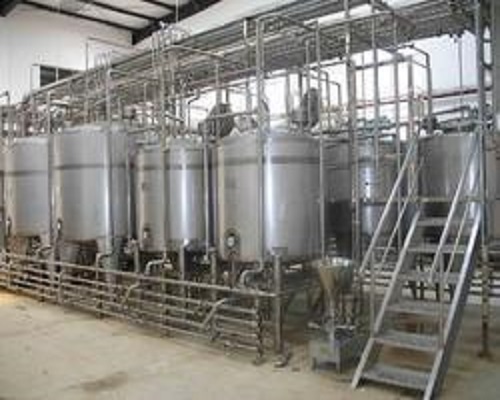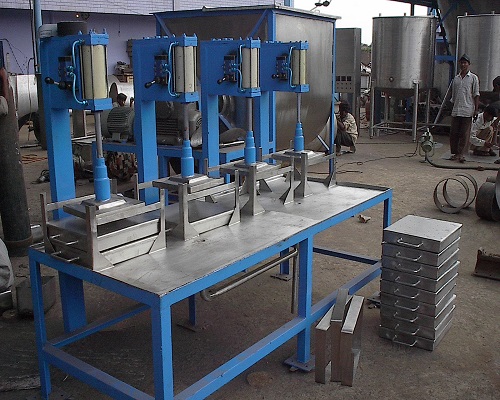Casein
Casein is the most important protein of the milk with a share of up to 80% Whole Milk Protein.The Remaining 20 % is formed by Whey Proteins. Casein is the most important protein of the milk with a share of up to 80% Whole Milk Protein.
Casein means a very important raw material not only for the food industry but also for many other important applications in chemical industry, Paper Industry, Paint and Pharma Industry. We have considered Acid Casein production for this plant.
Casein is prepared by acid precipitation from unheated or short time heated separated milk, which has a fat content of not more than0.05%. Higher temperature reduces solubility since whey proteins become precipitated. Whey and lactose are removed from the curd thus obtained by heating and then washing with warm water. The casein is dried to a moisture content of 8-12% and the final product contains 80-90% Casein, not more than 2% fat and 2-4% ash. To prevent discoloration through browning by the maillard reaction, the lactose content should be reduced as much as possible.
Demineralised Whey Powder/Whey Protein Concentrate
Whey received from cheese processing shall be pretreated i.e. clarified whey cream is separated then chilled/pasteurized & stored at required temperature (4-6 Deg C). Pasteurized whey will be passed through nanofiltration to remove 50 % of minerals mostly monovalent.Retentate received shall be passed through UF for WPC 80 separation. Permeate from Nano will be further treated to recover 80 % of permeate water will be used in processing. Retentate of UF will have WPC 80 component and permeate will have mainly lactose fraction.WPC 80 component so achieved will be further concentrated & dried. Permeate portion will be concentrated to 48-55% & then spray dried.
DM whey can be used in
- Infant Food
- Weaning food
- Bakery Product
- Confectionery product
Milk Protein Concentrate
For this skimmed milk of maximum 0.06 % milk fat and around 8.5 % SNF is pumped through a series of special Ultra Filtration Membranes (approx.7 to 9 stages) under cold temperature conditions ranging between 10 to 15 deg C.The major proteins and part of lactose along with complete part of milk fat does not pass through the membrane and comes out as retentate.Around 80 % of ash and only 15 % of the available NPN in milk are also retained in this part of ash passing through the membrane coming out as permeate. The retentate coming out is in the range of 18-22 % total solid and permeate is in the range of 18-22 % total solid and the permeate is in the range of around 5 % total solid contents.
Retentate is thereafter further concentrated up to around 45% TS level either by using an evaporator or up to around 30 % TS level by using an RO system. Concentrated liquor is then spray dried to form MPC powder.
Permeate recovered is concentrated to minimum 62% TS level in an evaporator and then cooled under controlled conditions for Lactose crystallization. Crystals are washed, decanted and dried to produce pharma grade lactose.
Lactose Powder Plant
Lactose is the main constituent of whey. There are two methods of recovery, depending on raw material.
-Crystallization of lactose in untreated but concentrated whey.
-Crystallization of lactose in whey from which the protein has been removed by UF or some other method before concentration.
Whey is concentrated by evaporation to 60-62%. Then transferred to crystallization tank where seed crystals are added. Crystallization takes place slowly according to predetermined time/temperature program. The tanks have cooling jacket and equipment for control of cooling temperature. They are also fitted with special agitator. After crystallization the slurry proceeds to decanter centrifuges for separation of crystals. The lactose is dried after separation to residual moisture content of 0.1-0.5%, the temp. during drying should not exceed 93 deg C, as B-lactose is formed at higher temperature. Drying takes place in Fluidized bed dryer. The temp. is maintained at 92 Deg C and the drying time is 15-20 min. The dried lactose is transported by air to at a temp of 30 Deg C that also cools the lactose. The crystals are ground to a powder immediately after drying and packed.





